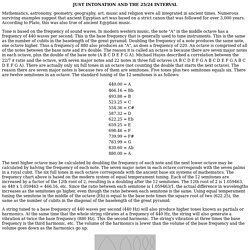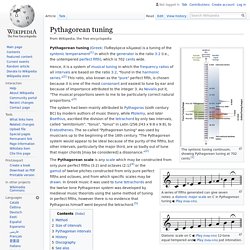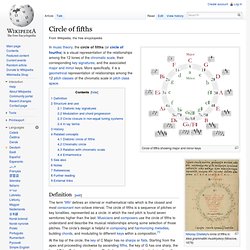

YouTube. How To Write Chord Progressions With NEGATIVE HARMONY [Simple Explanation] How To Use NEGATIVE Melody To Write Beautiful Music [Negative Harmony] Guitar Lesson Frank Gambale Modes, No More Mysteries. Frank Gambale: King of SHRED Guitar. Explore the SCALES with 4 smart TOOLS. Exercises on Natural, Dorian, Melodic and Harmonic minors - all instruments. HARMONIC MINOR MODES - Theory & Practice. The Most Popular Keys of All Music on Spotify. How to Write Songs Using the 7 Modes and Modal Interchange / Borrowed Chords. Chord name finder and note entry guitar chords notation piano keyboard notes to chords score find chord name notation note notes find and construct chords chord harmony chord recognition chord spell note entry piano chords guitar chords. 5 Ways to Use Non-Diatonic Notes in Jazz Improvisation. You want to play exciting solos… Ones that will make the audience sit on the edge of their seats, that’ll make you stand out from every other musician in the room.

…except when you improvise everything ends up sounding exactly the same. Many musicians share this frustration and for many it goes right back to the standard approach to improvisation that you find in most books. The mentality that each chord has a designated scale: Major scales for major chordsDorian for minor chordsMixolydian for V7 chords This is a fine place to start, but if you limit your harmonic and melodic approach to these 3 scales you’ll end up feeling trapped inside of a musical box. However, listen to some of your favorite solos and you’ll notice that the best players aren’t always following these “rules.”
Notes that don’t belong in the chord, notes that don’t fit into any particular scale, yet they still sound good… And the same can be true for you, if you know the right way to use them. 1) Learn to alter V7 sounds. John Coltrane's Discovery of a Music of the Spheres. The Darkest Scale Ever. The Most Popular Keys of All Music on Spotify. Music Scales and Chord Tools for Guitar and Piano. Harmonisation 3. Octave spiral with the first 16 elements of the harmonic series. Interval Calculator. Interactive Circle of Fifths. Octave spiral with the first 16 elements of the harmonic series. Untitled Document. Mathematics, astronomy, geometry, geography, art, music and religion were all integrated in ancient times.

Numerous surviving examples suggest that ancient Egyptian art was based on a strict canon that was followed for over 3,000 years. According to Plato, this was also true of ancient Egyptian music. Tone is based on the frequency of sound waves. In modern western music, the note "A" in the middle octave has a frequency of 440 waves per second. This is the base frequency that is generally used to tune instruments. The next higher octave may be calculated by doubling the frequency of each note and the next lower octave may be calculated by halving the frequency of each note. A string tuned to a base frequency of 440 waves per second (440 Hz) will also produce higher tones known as partials or harmonics.
Why the circle of fourths is so important when learning major scales. Playing your major scales should be a part of your daily practice regimen.

However, practicing them in a “circle of fourths” or “circle of fifths” pattern is even better. Let’s focus more on circle of fourths. If you type “circle of fourths” or “circle of fifths” in google, you can actually find a host of other examples. Notice that the keys go from: C >>> F >>> Bb >>> Eb and so forth. If this were a clock, C would be at 12 o’ clock. This is the optimal way to play your scales. Then play your F major scale all the way through (F G A Bb C D E F). Pythagorean tuning. The syntonic tuning continuum, showing Pythagorean tuning at 702 cents.[1] Diatonic scale on C Play 12-tone equal tempered and Play just intonation.

Pythagorean (tonic) major chord on C Play (compare Play equal tempered and Play just). Comparison of equal-tempered (black) and Pythagorean (green) intervals showing the relationship between frequency ratio and the intervals' values, in cents. The system had been mainly attributed to Pythagoras (sixth century BC) by modern authors of music theory, while Ptolemy, and later Boethius, ascribed the division of the tetrachord by only two intervals, called "semitonium", "tonus", "tonus" in Latin (256:243 x 9:8 x 9:8), to Eratosthenes. Method[edit] Pythagorean tuning is based on a stack of intervals called perfect fifths, each tuned in the ratio 3:2, the next simplest ratio after 2:1.
Circle of fifths. Circle of fifths showing major and minor keys Nikolay Diletsky's circle of fifths in Idea grammatiki musikiyskoy (Moscow, 1679) In music theory, the circle of fifths (or circle of fourths) is a visual representation of the relationships among the 12 tones of the chromatic scale, their corresponding key signatures, and the associated major and minor keys.

More specifically, it is a geometrical representation of relationships among the 12 pitch classes of the chromatic scale in pitch class space. Definition[edit] Structure and use[edit] Harmonic series (music) Harmonic series of a string with terms written as reciprocals (2/1 written as 1/2).

A harmonic series is the sequence of all multiples of a base frequency. Any complex tone "can be described as a combination of many simple periodic waves (i.e., sine waves) or partials, each with its own frequency of vibration, amplitude, and phase. "[1] (Fourier analysis) Key Color.